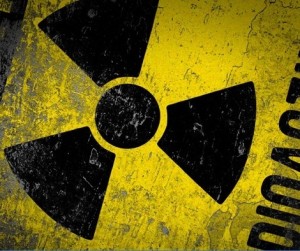☢ Strange Fire at Fukushima Daiichi Nuclear Power Plant Aug. 6 2011 ☢ UPDATE 2 ☢
I got some good comments about my last post trying to pinpoint the location of the Fukushima Fires going on. Some have put forth a very dark theory about what is happening. They claim that the Centralized Radiation Treatment Facility (area located behind the reactor 4 building) is in use to burn radioactive material on site. Another teory would be that they have built a facility next to reactor 3 to do the same. Burning radioactive waste sounds crazy, but the sad thing about this is that it is in use all over the world. There have been actions against this to little effect. Because it is considered safe when they use $200.000 filters made in Germany to capture the "fallout".
I can't say for sure this is what's going on because the location of the fires are still to me in the same area as the Common Spent Fuel Storage Facility. Looking at the pictures there is a hill in the background. If we take this hill and the tower drawn out in red into reference then to me it looks like the fire is in that area. But it's hard to say for sure, and with news of how radioactive material is indeed being burned around the world. Who knows what they really are up to. One thing is for certain, something is burning at the plant.
*************************************************************************
Why Fukushima’s “spent” fuel rods will continue to catch fire | |
| By: Kirk James Murphy, M.D. Tuesday March 15, 2011 4:26 pm | |
Six of the spent fuel rod pools are (or were) located at the top of six reactor buildings. One “common pool” is at ground level in a separate building. Each “reactor top” pool holds up to 3450 fuel rod assemblies. The common pool holds up to 6291 fuel rod assemblies. [The common pool has windows on one wall which were almost certainly destroyed by the tsunami.] Each assembly holds sixty-threefuel rods. This means the Fukushima Daiichi plant may contain over 600,000 spent fuel rods. The fuel rods once stored atop reactor 3 may no longer be there: one of the several explosions at the Fukushima reactors may have damaged that pool.
Now that we have partial meltdown in the reactor vessels – the part of the reactor where nuclear reactions are supposed to happen – in at least three of the Daiichi palnt’s six reactors, why bother with swimming pools for fuel rods? Simple. Even after they are no longer usable to drive nuclear fission in the reactor vessels, the “spent” fuel rods are still highly radioactive. Part of that radioactive energy is emitted as heat. That’s no surprise: heat from radioactivity is the how the reactor core vessels generate the heat that drives the nuclear plant’s turbines to generate electricity. The fuel rods don’t know whether they are in the core or in the pools: they keep emitting heat and radioactivity until the radioactive material decays into non-radioactive elements. That process can take years, which is why spent fuel rods are still dangerous years after they leave the reactor core.
How can we prevent the spent fuel rods from bursting into flame once they’re out of the reactor core? The Fukushima plant – like many other reactors – keeps the rods in water, which absorbs the heat energy. But the pools – like the water in a teakettle – will boil away unless new water is added. After the Fukushima plant lost power in Friday’s 9.0 earthquake and got hit by the tsunami, the plant was no longer able to keep the pools topped up.
****************************************************











No comments:
Post a Comment